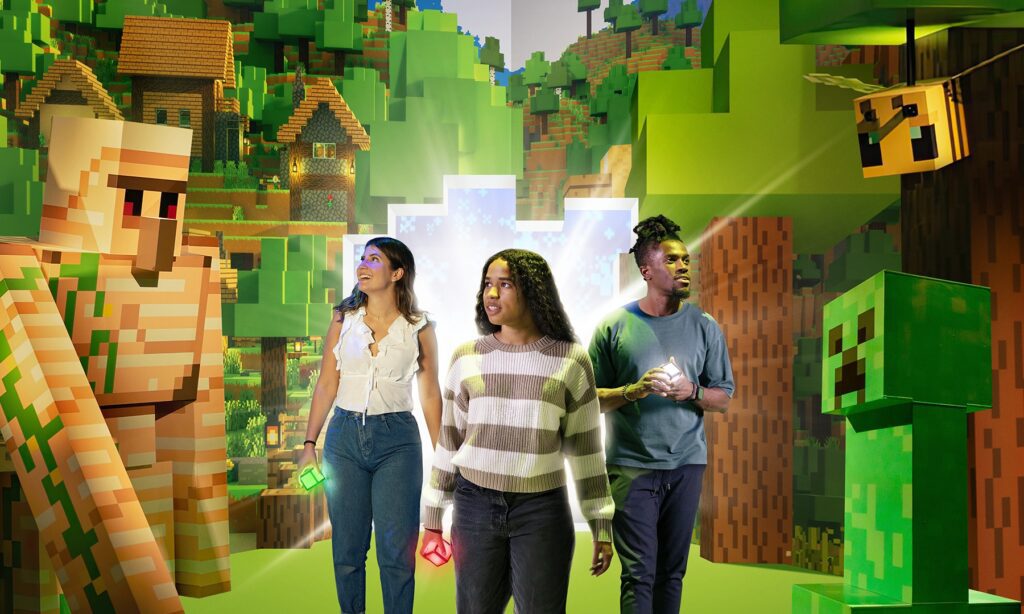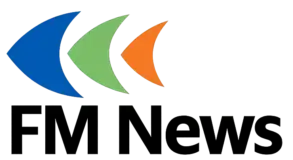Since its public release in 2009, Minecraft has matured from a humble sandbox testing ground to a worldwide cultural phenomenon. Initially developed by Markus Notch Persson and subsequently managed by Mojang Studios—now a Microsoft subsidiary—it has sold more than 300 million copies, putting it on track to become the highest-grossing video game of all time. It’s a fleeting phenomenon that crosses over into gaming, education, design, entertainment, and innovation.
Let’s look at how this blocky gem continues to construct our world—1 block at a time.

1. Genesis: From Lone Dev to Minecraft Madness
Minecraft started as a personal hobby of a small Swedish programmer called Notch. He combined his passion for sandbox games and old-school “voxel” graphics to invent something new: an open world with no preconceived objectives. Players could dig, construct, explore, and survive—or just wander in serene creation mode.
Its initial 2009 alpha release caught immediate speed. Months later, groups of ardent fans had emerged, showcasing their creations on YouTube and forums. Word spread quickly. By 2011, Minecraft emerged from beta and officially came online, admired for its endless possibilities and charm. Notch sold the company to Microsoft in 2014 for $2.5 billion, bringing a new era with regular updates, cross-platform compatibility, and broadened horizons.
2. Core Gameplay: Open-Ended, Yet Perfectly Structured
Technically, Minecraft is a coreless open world—a game without a game. But beneath the surface lies a deep structure within its systems.
Blocks & Biomes
All of life is comprised of cube blocks—minerals, tree trunks, dirt, and sky. There are thousands of biomes—deserts, grassy forests, frozen tundras, and black caves—that make each discovery fresh. The terrain generation algorithm guarantees infinite variety; players never tire of surprises.
Gathering & Crafting
The straightforward “punch-a-tree” mining process unleashes potential: wood to planks, planks to tools, tools to dig deeper for ore, ore powering enchantments. This cycle—mine, craft, build—is ever-rewarding and the source of players’ creative potential and survival motivation.
Game Modes
Survival Mode: Harvest resources, kill monsters, manage hunger and health. The adventure of a night dive into a dark cave is not to be missed.
Creative Mode: Endless blocks, fly instantly, no danger—unrestricted fantasy. It’s the playground for dreams and builders.
Adventure Mode: For custom maps—players wake up in worlds designed by other people. Rules are strict here, traps wait, puzzles stall.
Hardcore Mode: Survival, permadeath—a fatal error means starting over.
Spectator Mode: Travel through invisible worlds; map judges and designers use it to view builds.
This cross-modal experience guarantees Minecraft communicates with builders, explorers, survivalists, authors, and teachers on an equal footing.
3. World-Making: From Cabins to Castles
Creation is not a matter of scale in Minecraft. Everything is possible—regardless of grandeur or simplicity.
Personal Projects
Single structures to skyscrapers, medieval fortresses to cities of tomorrow—wonders are built by millions of players. Fans try to recreate real-life buildings such as the Eiffel Tower or Taj Mahal. Others construct dream houses or fantasy realms, creating worlds that are one-of-a-kind.
Redstone Mechanics
Technically, Minecraft has Redstone—a gameplay material that mimics electricity wire. Players can:
- Build automated farms
- Construct secret door gadgets
- Develop calculators and logic gates
- Design mini-games and complex machinery in the world itself
- Redstone takes Minecraft into the land of engineering, where timed mechanisms and digital circuits are as inevitable and playful as the game’s other controls.
Mega Projects & Collaborations
Play with hundreds of other players on the same servers and explore entire planets constructed to scale. The “Build The Earth” project, for instance, allows players to reconstruct the entire planet, block by block. These giant projects represent an unheard-of level of player enthusiasm and dedication seldom encountered in games.
4. Education: A Classroom Sandbox
Educators and teachers were soon aware of Minecraft’s value. In 2016, Mojang released Minecraft: Education Edition, designed specifically for the classroom. Currently, schools in more than 115 countries utilize it as an educational resource for learn-through-doing.
Top Benefits
- Engagement: Students enjoy interactive learning spaces.
- Collaboration: Team projects instill cooperation and compromise.
- Critical Thinking: Management of resources, planning, and problem-solving are part of game-play.
- STEM Learning: Redstone instruction of cause-and-effect and logic; command blocks expose students to coding-like script writing.
A Virtual Stage for Learners
Schools have constructed Egyptian pyramids, Mars rovers, and Victorian towns in Minecraft. Students learn by doing—better than rote memorization. Teachers, on the other hand, enjoy an easy-to-use interface where errors can be reversed in an instant—no risk, just learning.
5. YouTube Culture & Modding Community
No games have done more for digital culture than Minecraft. Its use on YouTube and Twitch is astronomical.
Content Creators
A wave of YouTubers such as Dream, TommyInnit, Technoblade, Stampylonghead, and DanTDM created enormous followings on the back of Minecraft content. These include:
- Let’s Play and guides
- Mod showcase
- Mini-game challenges (e.g., “SkyBlock”, “Parkour”, “Build Battles”)
- The legendary Dream SMP, community-based roleplay/narrative server with millions watching daily
- Their content draws tens of millions of viewers, and Minecraft becomes a top-tier streaming playlist hit globally.
The Power of Mods
Aside from streams and scores, Minecraft allows more creativity through the utilization of mods. Individual developers add the game new mechanisms, biomes, mobs, and gameplay types.
Some of the popular mods are:
- OptiFine (performance & graphical update)
- Biomes O’ Plenty (new variation in environments)
- Pixelmon (introduces Pokémon to Minecraft)
- Tinkers’ Construct (crafting tools and resources next generation)
- These mods lead to mini-cultures—communities for creating entire universes in Minecraft. Modders attribute their work as launching pads for professional software-coding, game-dev, and art careers.
6. Social Spaces & Server Ecosystems
Minecraft is very social. Servers unite people through shared public creative and gameplay spaces.
Public Servers
Hypixel: With mini-games such as Bed Wars, SkyBlock, Murder Mystery, it is the largest Minecraft server in the world.
Mineplex, Cubecraft, and Lifeboat each have their own distinctive experiences with millions of players.
Servers host community events: holiday-themed builds, race tournament, battle arena, and survival challenge.
Beyond Gameplay
Social gathering places are some servers—hosting virtual concerts, graduations, even political debate. In countries where censorship is practiced, Minecraft worlds have become free zones for transmitting and storing information—digital repositories for prohibited books or newspapers.
7. Brand Expansion & the Microsoft Era
When Microsoft purchased Mojang in 2014, everyone asked what would happen to Minecraft. But instead of losing its independent voice, Minecraft grew—sustainably.
Spin-Offs & Merchandise
Minecraft Dungeons (2020): Diablo-esque dungeon crawler.
Minecraft Legends (2023): Real-time strategy brawler.
Dream AR potential of Minecraft Earth (cut 2021).
Dozens of LEGO sets, novels, board games, clothes, and toys—a merch universe that just gets bigger.
Ongoing Updates
Microsoft’s patch approach is what enables Minecraft to add meaningfully:
2021’s “Caves & Cliffs” overhauled world generation and mobs
2022 featured “The Wild Update”, adding frogs, fireflies, mangrove swamps
2023–2024 goes on with archaeology, archaeology items, ancient cities, sniffer mobs, trail chambers, camels that are unlockable, and so on..
These updates maintain Minecraft’s freshness without compromising its special style. Millions of servers and modded worlds mirror and showcase every update, further enriching the entire ecosystem.
8. Why Minecraft Still Matters
Almost 16 years on, and Minecraft is more alive than ever. Here’s why:
Infinite Creativity: Players are free to choose what their world is like—no stories forced, no linear story pre-conceived.
Global Accessibility: Plays on PC, Mac, phone, consoles, and even Raspberry Pi—it’s playable near everywhere.
Infinite Expansion: Regular updates, thriving modding communities, and new spin-offs keep the universe growing.
Community & Cooperation: Servers, streams, modding, and learning turn Minecraft into more than a solo game—it’s a togetherness platform.
Development of Skills: Learning logic, coding, teamwork, planning, and creativity through play develops useful real-life skills.
Safe Failing & Learning: When you fail—creeper burns down your house?—you’re safer than life. You try again, build better, learn more.
9. Empowering a New Generation in India
Minecraft’s reach is expanding in India, where its adaptable platform and minimal hardware requirements strike a chord.
Education Integration
Schools are using Minecraft: Education Edition to educate students in subjects such as computer science, environmental studies, and local history. Classroom projects include:
- Rebuilding Hampi’s ruins
- Modeling Chandrayaan missions
- Simulating river ecosystems with students
Local Content Stars
Indian YouTubers such as Triggered Insaan, Mythpat, and BeastBoyShub merge gaming with local humor—a dynamic combination of culture and entertainment.
Community Events
Virtual gatherings, build competitions, and school Minecraft clubs give kids a chance to get together, share, and learn from each other.
10. Criticism & Challenges
Even a dear giant such as Minecraft has its own challenges to face:
- Screen Time Concerns: Parents are concerned with overuse by young players.
- Server Moderation: Open chat and access mean toxic behavior can boil over—moderation is needed.
- In-Game Purchases: Reasonable as they are, paid skins, realms, and marketplace content can add up.
- Learning Curve: New players can get frustrated; non-tutorialization deters early adopters.
- But community resources—parental filters, moderated servers, education guides—offer solutions. In good hands, Minecraft is a healthy, enriching experience.
11. Looking Ahead: The Next Block
What can the future hold for this blocky giant?
- More interactive biomas: Networked subterranean lakes, immense coral reefs, living forests.
- More depth in storytelling tools: More advanced NPCs, villager AI, dynamic quests.
- AR and mixed-reality revisited: Now that the hardware continues to evolve, Minecraft Earth–style experiences will once again be possible.
- More integration of STEM: Additional Redstone complexity, integrated programming languages, support for API use in student projects.
- Partner-driven development: The Microsoft partner program ensures that modders and creators are included in setting the official updates.
- And at the same time, Minecraft’s cultural influence persists—we educate children on how to build, create, code, collaborate, and acquire soft and hard skills fit for a digital age.
12. Conclusion: More Than Blocks
Minecraft is more than a video game. It’s:
- A creative workshop
- A classroom
- A social hub
- A content machine
- A launchpad for future technologists
More than 300 million copies sold, millions of users logging in every day, thousands of servers, thousands of mods, and millions of creators alike are testament to a cultural revolution—a blocky echo of what the human imagination can achieve when released.
From solo play of excavation delight to shared excitement of grand build undertakings, from scoped educational games to planetary servers, Minecraft has recharted the map of video game possibility. It has provided the world with a language—a means to build, to code, to learn, and to connect.
Block by block, Minecraft has constructed not only worlds, but careers, communities, and creativity. And as long as there remain gamers who grab virtual pickaxes, its legacy will only become richer, deeper, and more innovative.
So get in, and begin creating—your next masterpiece could be the block that will change the world.












































